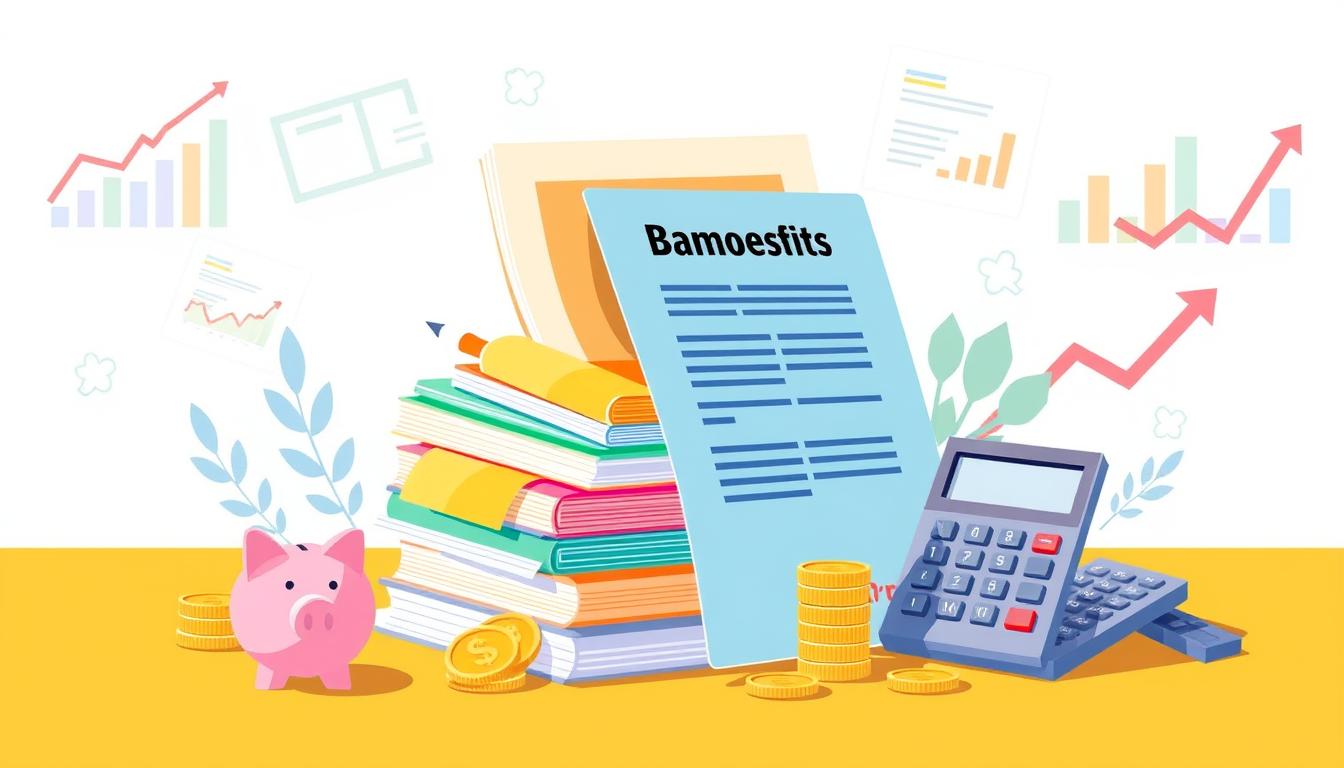Have you ever felt that pinch when tax season rolls around, watching your hard-earned money vanish into what seems like an endless pit of deductions and liabilities? It’s a sentiment many share, especially in recent years, as frustrations over high federal income taxes have led to increased anxiety about maximizing tax benefits. However, there’s hope and, more importantly, tangible relief available through tax credits. These credits act as a direct lifeline to inflate your tax refund and significantly reduce what you owe to the IRS. Understanding how to effectively navigate these credits can not only save you money but also restore some peace of mind as you take charge of your financial journey toward stability and success12.
Key Takeaways
- Tax credits directly reduce your tax liability, providing potential savings and tax relief.
- Understanding the types of tax credits can help you maximize your savings effectively.
- Many tax credits are available until 2032, allowing homeowners to reduce energy-efficient home improvement costs.
- Claiming tax credits requires specific documentation, including IRS Form 5695.
- Planning ahead for tax credits can lead to more significant tax refunds in the future.
Understanding Tax Credits and Their Purpose
Understanding tax credits is essential for anyone looking to maximize their tax benefits. A tax credit directly reduces the amount of tax you owe, contrasting with a tax deduction that lowers your taxable income. This fundamental difference highlights the importance of tax credits in effectively managing your overall tax liability.
What Is a Tax Credit?
A tax credit is an amount that taxpayers can subtract from their total tax owed, effectively lowering their tax bill. For instance, the Earned Income Tax Credit (EITC) is designed to assist lower-income individuals, providing refunds even if they do not owe any taxes. In fact, millions of eligible workers do not claim this credit, missing out on thousands of dollars in potential refunds every year3.
Difference Between Tax Credits and Deductions
While both tax credits and deductions offer tax relief, they operate differently. Tax deductions allow you to reduce your taxable income by specific amounts, such as those associated with student loans or alimony payments4. In contrast, tax credits reduce your tax liability on a dollar-for-dollar basis, making them a more beneficial option4. For example, the standard deduction for 2023 is $13,850 for single filers and $27,700 for married couples filing jointly5.
Importance of Tax Credits
The importance of tax credits cannot be overstated, particularly when taxpayers face challenges in managing their financial obligations. Tax credits can promote behaviors that benefit the economy and the environment, encouraging individuals to invest in clean energy or education4. With various credits available, including those for dependents and healthcare, taxpayers have opportunities to significantly enhance their refunds and reduce their liabilities. For instance, eligible families can claim the Child Tax Credit, which has undergone various changes to ensure its benefits are accessible4.

Types of Tax Credits Available in the U.S.
The landscape of tax credits in the U.S. is diverse, allowing you to maximize your savings easily. Understanding the different types of tax credits is essential for effectively lowering your tax liability. Two primary classifications are refundable and nonrefundable tax credits.
Nonrefundable vs. Refundable Tax Credits
Refundable tax credits allow you to receive a refund if the credit exceeds your tax liability, potentially resulting in refunds larger than the taxes you owe6. In contrast, nonrefundable tax credits can only reduce your tax liability to zero; if the credit exceeds this amount, there is no refund6. This distinction makes refundable credits more appealing for many taxpayers, especially those with lower incomes who may find them more beneficial6.
Common Federal Tax Credits
Some of the most notable federal tax credits include the Child Tax Credit and the Earned Income Tax Credit (EITC). The EITC, for instance, significantly helps low-income workers by lowering their tax bill and, in many cases, may result in a refund if the credit is greater than their tax liability6. Additionally, foreign tax credits offer a choice between a credit or deduction for foreign taxes paid, which can be carried back one year and forward ten years7.
State-Specific Tax Credits
States also offer state-specific tax credits, targeting unique taxpayer needs and promoting local economic growth. These credits can significantly alleviate your overall tax burden, providing various benefits tailored to residents of those states. Credits might include incentives for businesses, educational assistance, or energy efficiency improvements.

| Type of Tax Credit | Refundable | Nonrefundable |
|---|---|---|
| Child Tax Credit | ✓ | ✓ |
| Earned Income Tax Credit (EITC) | ✓ | ✗ |
| Foreign Tax Credit | ✓ | ✓ |
| Mortgage Interest Credit | ✗ | ✓ |
Eligibility Criteria for Tax Credits
Understanding the eligibility for tax credits is essential as it often involves specific income requirements and considerations regarding filing status for tax credits. Proper documentation is vital to substantiate your claims and maximize potential savings.
Income Requirements
To qualify for various tax credits, you must generally meet certain income requirements. For example, low- to moderate-income workers with qualifying children may be eligible to claim the Earned Income Tax Credit (EITC) if they meet certain qualifying rules8. For the Child Tax Credit in 2023, if your annual income does not exceed $200,000 ($400,000 for joint filers), you can claim the full amount for each qualifying child9. Some parents with higher incomes may still qualify for a partial credit9.
Filing Status Considerations
Your filing status for tax credits can impact eligibility significantly. You can use various statuses like married filing jointly, head of household, or single. Special rules apply for those who are separated and not filing jointly8. For instance, to claim EITC as a qualifying widow or widower, certain conditions must be met8.
Documentation Needed
When claiming tax credits, the required documentation is critical. For the Child Tax Credit, forms such as Form 1040 and Schedule 8812 must be submitted9. Availability of a valid Social Security number is necessary for both claiming your credits and for any dependents you want to include8. Keeping organized records simplifies the claims process and can contribute to successfully obtaining all eligible credits.

How to Claim Your Tax Credit
Claiming tax credits can significantly reduce your tax burden. Following a structured approach for filing taxes ensures you don’t overlook any eligible credits. Below is a detailed guide to help you navigate this process smoothly.
Filing Your Taxes: A Step-by-Step Guide
Start by gathering all necessary documents, including your income statements and any documentation for deductions and credits. Ensure that you review the eligibility criteria for each credit you plan to claim. Begin filling out your tax return with important tax forms, such as Form 1040, checking for credits like the Earned Income Tax Credit (EITC) and the Child Tax Credit. Remember that the IRS cannot issue EITC refunds before mid-February, and most EITC refunds are expected to be available by March 1 if you opted for direct deposit10.
Important Forms to Use
Your tax return will likely require supporting forms. For the EITC, ensure you are using the correct form and adhere to deadlines—2023 claims have a filing deadline of April 18, 202710. If you discover later that you failed to claim the EITC, you can utilize Form 1040-X for filing an amended return. Always check if there are other credits you qualify for when claiming the EITC, such as education credits which can provide additional savings11.
Avoiding Common Mistakes
One of the most crucial aspects of claiming tax credits is avoiding tax mistakes. Many taxpayers overlook the need for documentation, which can lead to denied credits. Be careful to read the eligibility requirements thoroughly, as misunderstandings here often result in lost opportunities. Familiarize yourself with the various income limits; for instance, the Savers Tax Credit offers up to $1,000 for single filers if your income is under $38,25011. Making use of tax software can greatly assist in minimizing errors, helping you avoid common pitfalls and ensuring you claim all available credits.

Tax Credits for Families
Families in the United States can significantly benefit from various tax credits such as the Child Tax Credit, Earned Income Tax Credit, and dependent care tax credit. These credits aim to alleviate the financial burdens that come with raising children and supporting family needs.
Child Tax Credit Overview
The Child Tax Credit (CTC) allows eligible taxpayers to claim up to $2,000 for each qualifying child under the age of 17. This amount, however, reduces by 5 percent for single parents with an adjusted gross income exceeding $200,000, or $400,000 for married couples filing jointly12. For the tax year 2021, the American Rescue Plan Act increased the CTC, allowing parents to claim up to $3,600 for children under age 6 and up to $3,000 for those aged 6 to 1712. The CTC has positively impacted families, with 90 percent of families receiving an average credit of $2,390 in 2022, particularly benefiting low-income households12.
Earned Income Tax Credit (EITC)
The Earned Income Tax Credit (EITC) serves as a financial boost for low to moderate-income working families. In 2023, the Michigan EITC increased from 6% to 30% of the federal EITC, translating to a maximum amount of $2,22913. This expansion is designed to provide greater relief, with earlier tax year 2022 filers still receiving the original 6% before the adjustment took effect. Regardless of Michigan taxable income, individuals with earned income may be eligible for this credit13.
Dependent Care Credit
The dependent care tax credit offers families a crucial benefit by covering a portion of qualifying childcare expenses. This credit is particularly beneficial for parents who need to pay for childcare services while working or pursuing education. It’s critical for eligible families to understand this credit, as it can significantly reduce out-of-pocket expenses associated with child-rearing.

Tax Credits for Homeowners
Homeownership presents significant financial benefits, including various homeowner tax credits that can help reduce your overall tax burden. Among these, several credits cater specifically to homeowners, allowing you to make the most of your investment. Each of these credits addresses distinct financial aspects associated with owning a home.
Mortgage Interest Credit
The mortgage interest credit helps homeowners claim a percentage of their mortgage interest, making homeownership more affordable. This credit is particularly beneficial for low and moderate-income households. In the 2024 tax year, the limit for deducting mortgage interest was reduced to $750,000 for single filers or married couples filing jointly, reflecting the changes introduced by the Tax Cuts and Jobs Act14. Homeowners can also deduct up to $10,000 of property taxes if married couples file jointly, or $5,000 for single filers or married filing separately, ensuring additional savings14.
Residential Energy Efficient Property Credit
This credit incentivizes homeowners to make energy-efficient upgrades to their property. For qualifying improvements, homeowners can receive a credit amount of 30% for expenses incurred in 2022, increasing to $1,200 from 2023 through 2032, with no lifetime limit15. This includes a separate annual credit limit of $2,000 for specific energy-efficient installations such as heat pumps and biomass stoves. These enhancements not only help in reducing utility costs but also contribute positively to the environment.
First-Time Homebuyer Credit
The first-time homebuyer credit has been designed to assist individuals in managing the costs associated with purchasing their first home. This credit helps alleviate financial burdens and encourages homeownership among eligible buyers. By offering financial relief, the first-time homebuyer credit can help you navigate the path toward homeownership more effectively.

| Credit Type | Credit Amount | Eligibility Criteria |
|---|---|---|
| Mortgage Interest Credit | Percentage of mortgage interest paid | Low and moderate-income homeowners |
| Residential Energy Efficient Property Credit | 30% of qualifying expenses, up to $1,200 | Primary residence enhancements |
| First-Time Homebuyer Credit | Variable depending on eligibility | First-time homebuyers |
Tax Credits for Education Expenses
Education tax credits play a crucial role in alleviating the financial burden associated with educational expenses. Understanding the American Opportunity Credit, Lifetime Learning Credit, and state-level education credits can significantly impact your financial strategies.
American Opportunity Tax Credit
The American Opportunity Tax Credit provides a tax credit of up to $2,500 for tuition and qualified education expenses during the tax year17. To qualify for the full AOTC, your Modified Adjusted Gross Income (MAGI) must be $80,000 or less for individuals or $160,000 or less for married couples filing jointly17.Up to 40% of this credit may be refundable, offering a potential refund of up to $1,00018. This credit can be claimed for a student who is enrolled at least half-time and has not completed the first four years of post-secondary education18.
Lifetime Learning Credit
The Lifetime Learning Credit offers up to $2,000 in tax savings per year, making it generally more accessible for continuing education18. Unlike the AOTC, this credit is non-refundable, meaning it can only reduce your tax owed but will not result in a refund18. Qualified expenses include tuition and necessary course materials, but it does not cover room and board or personal expenses17.
State-Level Education Credits
Many states provide their own education credits, aimed at reducing tax liability on educational expenses19. State education credits can vary in amount and eligibility criteria, often complementing federal education tax credits like the AOTC and the Lifetime Learning Credit19. Utilizing both state and federal credits can enhance your overall savings, making education more attainable.

Business Tax Credits
Business owners can significantly reduce their tax burdens through various incentives designed to support growth and sustainability. Understanding these tax credits, including the small business health care credit, childcare facility credit, and research and development tax credit, is essential for maximizing your potential savings.
Small Business Health Care Tax Credit
The small business health care credit allows qualifying small businesses to cover a substantial portion of their employees’ premiums. This credit provides up to 50% of the premiums paid for businesses with fewer than 25 full-time equivalent employees who pay an average wage below a specific threshold20. It enables business owners to invest in their workforce while enjoying tax savings that can enhance their operating margins.
Credit for Employer-Provided Childcare Facilities
The childcare facility credit supports businesses that offer childcare benefits to their employees. Employers can qualify for a tax credit when they create or expand childcare facilities, making it easier for employees to balance work and family responsibilities. This credit serves to encourage a stable workforce, ensuring businesses can attract and retain talent21.
Research and Development Tax Credit
Businesses engaged in innovation and development of new products or processes can utilize the research and development tax credit to receive significant financial advantages. Less than three in 10 small businesses eligible for this credit currently claim it, representing a missed opportunity for potential savings. Effective changes coming in 2024 aim to enhance data accuracy in claiming this credit, further promoting its use20. This credit not only boosts innovation but allows for growth in competitive sectors.

| Tax Credit | Description | Eligibility |
|---|---|---|
| Small Business Health Care Credit | Covers a percentage of employee health insurance premiums. | Less than 25 FTE employees; average wage below a limit. |
| Childcare Facility Credit | Supports businesses providing childcare facilities. | Employers creating or expanding childcare services. |
| Research and Development Tax Credit | Encourages innovation by reimbursing R&D expenses. | Businesses investing in product development and processes. |
Utilizing Tax Software for Maximized Credits
Using tax software effectively can significantly enhance your experience with tax credit maximization. These tools not only streamline the filing process but also ensure high levels of accuracy. You’ll discover various advantages by opting for tax software, making it a smart choice for any taxpayer aiming to claim every eligible credit.
Benefits of Tax Software
Tax software offers numerous features tailored to improve your tax filing experience. Among the key tax software benefits are:
- Guided workflows that lead you through the filing process.
- Automatic calculations reducing the risk of errors.
- Recommendations for deductions and credits based on your financial situation.
- Access to up-to-date tax regulations ensuring compliance.
Recommended Tax Software Options
Several recommended tax software options stand out for their user-friendly interfaces and robust features:
| Software | Key Features | Price Range |
|---|---|---|
| TurboTax | Guided tax preparation, 100% accuracy guarantee | $0 – $90 |
| H&R Block | In-person support, robust filing options | $0 – $80 |
| TaxAct | Affordable pricing, easy-to-use interface | $0 – $65 |
How Software Can Help Identify Credits
Identifying tax credits with software simplifies the process significantly. These programs analyze your financial data to pinpoint available credits. For example, TurboTax can help you recognize potential qualifications, such as:
- Childcare credits for families with kids under 17.
- Small business health insurance premium credits for eligible small business owners.
- Credits related to energy-efficient home improvements.
With tax software, you can be confident that you are not leaving any money on the table while maximizing your tax credits. Whether you file yourself or consult with a professional, utilizing technology can make a substantial difference in your tax savings2324.

The Impact of Tax Credits on Your Refund
Understanding the tax credits impact on your overall tax refund is vital for smart financial maneuvering. Tax credits can significantly alter your final tax bill, leading to a larger refund or reducing what you owe. For instance, if you owe $800 in taxes but qualify for a $1,000 refundable credit, you would receive a $200 refund25. Refundable tax credits are particularly beneficial since they can provide a refund even when tax liability is zero25. The three main categories of tax credits include nonrefundable, refundable, and partially refundable credits which all serve different purposes26.
How Tax Credits Affect Your Final Tax Bill
Tax credits can directly influence your final tax bill by enabling you to reduce your taxable income or directly resulting in a refund. Different credits have specific eligibility requirements, such as family size or income levels25 and can change yearly, affecting your credits and overall tax planning strategy25. Nonrefundable tax credits can only lower your tax liability to zero and cannot create a refund, while refundable ones can yield cash back from the IRS26. Understanding these nuances helps you navigate potential refunds effectively.
Planning for the Next Tax Season
Effective tax refund strategies involve careful planning as the next tax season approaches. Consider adjusting your withholdings or estimated payments, as this helps prepare for any credit qualifications and could lead to a more favorable outcome. Refund amounts may fluctuate based on inputting additional tax information or changing your filing status27. Utilizing software can assist in comprehensively evaluating your tax situation by capturing all possible deductions and credits.
Tips for Increasing Your Refund
To potentially increase your refund, explore all eligible credits and deductions thoroughly. Claiming dependents can impact credits like the Child Tax Credit, which improves your refund prospect27. Additionally, for tax year 2023, know the standard deduction amounts for your filing status, which are $13,850 for individuals or those married filing separately and $27,700 for couples filing jointly27. Itemizing deductions may yield more benefits if they surpass the standard deduction. Regularly reviewing your tax situation and planning throughout the year helps maximize your tax benefits.

Understanding tax deductions and credits is crucial for maximizing potential tax savings.
Updates and Changes to Tax Credits
Tax credit updates come frequently, and staying aware of these changes is essential for optimizing your financial situation. Recent legislative changes can include alterations to eligibility, growth in certain credits, and a variety of impacts on your tax situation. A clear understanding of these updates allows you to take full advantage of available credits.
Recent Legislative Changes
One significant update comes from the Child Tax Credit, which was increased from $2,000 to $3,600 for qualifying children under age 6 and $3,000 for others under age 1828. Additionally, the American Rescue Plan expanded the credit’s eligibility to include 17-year-olds, enhancing opportunities for many families28. The IRS recently announced tax inflation adjustments for tax year 2025, affecting over 60 tax provisions that will impact your filings in 202629.
How Changes Affect Your Tax Situation
Incorporating new credits and legislative updates can significantly affect your tax refunds. Taxpayers can benefit from one-time claims for alternative fuel credits and relief for excise tax liabilities introduced by the Inflation Reduction Act29. Furthermore, the IRS provided penalty relief on nearly 5 million 2020 and 2021 tax returns with unpaid balances, totaling about $1 billion, which predominantly benefited those earning under $400,000 annually29. Changes to standard mileage rates for business use, now set at 67 cents per mile for 2024, will also impact how you calculate deductions29.

| Credit | Previous Amount | New Amount |
|---|---|---|
| Child Tax Credit (under age 6) | $2,000 | $3,600 |
| Child Tax Credit (under age 18) | $2,000 | $3,000 |
| Business Mileage Rate (2024) | 65.5 cents | 67 cents |
| IRS Penalty Relief | N/A | $1 billion (estimated) |
Resources for Tax Credit Assistance
Finding reliable resources for tax credit assistance is crucial to navigate the complexities of tax preparation. You can access a variety of options, many of which provide valuable support tailored to your needs.
Where to Find Reliable Information
The IRS website stands as a primary source of reliable tax resources, offering extensive guidelines on available tax credits and eligibility. Community organizations often provide free tax preparation programs, specifically designed for low-income individuals, to ensure you receive the credits you qualify for. Utilizing the VITA Locator Tool or calling 800-906-9887 can help you find local VITA or TCE sites, where tens of thousands of volunteers assist at no cost to those earning $67,000 or less annually30.
Tax Preparation Assistance Programs
Your community may host various tax preparation assistance programs, especially for seniors and low-income earners. For instance, the TCE program provides tailored assistance to people aged 60 and above30. These programs ensure that individuals receive necessary help, focusing on maximizing tax credit opportunities. Many volunteers in these programs undergo extensive training to meet IRS standards, allowing them to offer accurate guidance during the tax filing process30.
Consulting a Tax Professional
Seeking advice from a tax professional can customize your approach to tax credit assistance. These experts can review your unique circumstances, optimizing your eligibility for various deductions and credits. Relying on professional knowledge can enhance your understanding of the available tax preparation programs and reliable tax resources specific to your situation. With their guidance, you can confidently navigate the intricacies of tax filings, ensuring all potential credits are claimed efficiently.

Planning for Future Tax Credits
In navigating your financial landscape, planning for future tax credits plays a crucial role in maximizing potential savings. Staying updated about possible changes in tax legislation ensures you capitalize on available opportunities. Implementing practical strategies can pave the way for effective year-round tax planning.
Strategies to Stay Informed
To keep yourself in the loop regarding future tax credits, consider the following strategies:
- Subscribe to reputable tax newsletters that provide timely updates on credit changes.
- Attend financial literacy workshops focusing on tax credits and tax-saving strategies.
- Join online forums or local groups where discussions about tax updates occur frequently.
How to Adjust Withholdings for Tax Credits
Adjusting tax withholdings throughout the year can be beneficial for optimizing future tax credits. You can evaluate your current tax situation to determine if adjustments are necessary. Consider these tips:
- Utilize tax calculators to estimate your potential tax return.
- Monitor your income changes to ensure your withholdings reflect your current financial status.
- Communicate with your employer about any required adjustments based on your tax planning strategies.
Importance of Year-Round Tax Planning
Engaging in year-round tax planning allows you to stay ahead and avoid surprises during tax season. Regularly assessing your financial health enables you to align your tax strategies effectively. Understanding potential future tax credits ensures you can take advantage of the benefits they provide.

Conclusion: Make the Most of Your Tax Credits
In summary, understanding and claiming available tax credits is essential to maximizing your savings. Tax credits directly reduce the amount you owe in taxes, providing significant financial benefits compared to tax deductions, which merely lower the income subject to taxation. For instance, credits like the Child Tax Credit can offer up to $2,000 for each qualifying child, while refundable credits may even result in a refund if they exceed taxes owed31. By taking the time to analyze your personal tax situation, you can implement a smart tax strategy to optimize these credits.
As you prepare for future tax seasons, consider how life changes such as having children or buying a home can impact your eligibility for various credits. Consistent review of your tax options will not only help you navigate the complexities but also empower you to maximize your tax credits effectively32. The proactive approach to tax planning that spans the entire year is crucial in keeping your financial stability in check, setting you up for success with your future tax filings.
Always engage in continuous learning about tax laws and available credits, as this knowledge will enhance your overall financial strategy. By staying informed and being aware of potential deductions and credits, you can significantly improve your financial situation, allowing you to achieve your personal and professional goals with ease31.
FAQ
What is a tax credit?
How do tax credits differ from tax deductions?
Why are tax credits important?
What types of tax credits are available in the U.S.?
What are the eligibility criteria for claiming tax credits?
How do I claim a tax credit?
Can families benefit from tax credits?
Are there tax credits specifically for homeowners?
What education tax credits are available?
What tax credits can business owners utilize?
How can tax software help with maximizing my tax credits?
How do tax credits affect my tax refund?
What recent changes have been made to tax credits?
Where can I find reliable resources for tax credit information?
How can I plan for future tax credits?
Source Links
- https://www.energystar.gov/about/federal-tax-credits – Federal Tax Credits for Energy Efficiency
- https://www.irs.gov/credits-deductions/energy-efficient-home-improvement-credit – Energy Efficient Home Improvement Credit
- https://www.irs.gov/newsroom/tax-credits-for-individuals-what-they-mean-and-how-they-can-help-refunds – Tax credits for individuals: What they mean and how they can help refunds
- https://www.investopedia.com/terms/t/taxcredit.asp – Tax Credit: What It Is, How It Works, What Qualifies, 3 Types
- https://www.irs.gov/credits-and-deductions-for-individuals – Credits and deductions for individuals
- https://taxfoundation.org/taxedu/glossary/tax-credit/ – What Is a Tax Credit?
- https://taxsummaries.pwc.com/united-states/corporate/tax-credits-and-incentives – United States – Corporate – Tax credits and incentives
- https://www.irs.gov/credits-deductions/individuals/earned-income-tax-credit/who-qualifies-for-the-earned-income-tax-credit-eitc – Who Qualifies for the Earned Income Tax Credit (EITC)
- https://www.irs.gov/credits-deductions/individuals/child-tax-credit – Child Tax Credit | Internal Revenue Service
- https://www.irs.gov/credits-deductions/individuals/earned-income-tax-credit/how-to-claim-the-earned-income-tax-credit-eitc – How to claim the Earned Income Tax Credit (EITC)
- https://turbotax.intuit.com/tax-tips/tax-deductions-and-credits/the-5-biggest-tax-credits-you-might-qualify-for/L3o8qrNnC – The 5 Biggest Tax Credits You Might Qualify For
- https://taxpolicycenter.org/briefing-book/what-child-tax-credit – What is the child tax credit?
- https://www.michigan.gov/taxes/iit/eitc – Michigan Earned Income Tax Credit for Working Families
- https://www.rocketmortgage.com/learn/tax-deductions-for-homeowners – 7 Tax Deductions For Homeowners: Your Breaks And Benefits
- https://www.irs.gov/credits-deductions/home-energy-tax-credits – Home energy tax credits | Internal Revenue Service
- https://dat.maryland.gov/realproperty/pages/homeowners’-property-tax-credit-program.aspx – Homeowners’ Property Tax Credit Program
- https://www.irs.gov/credits-deductions/individuals/education-credits-questions-and-answers – Education credits: Questions and answers
- https://turbotax.intuit.com/tax-tips/college-and-education/what-are-education-tax-credits/L7TuLrVqZ – How do Education Tax Credits Work?
- https://www.irs.gov/credits-deductions/individuals/education-credits-aotc-llc – Education Credits AOTC LLC | Internal Revenue Service
- https://www.uschamber.com/co/run/finance/small-business-tax-credits – Tax Credits Small Businesses Don’t Know They Qualify For
- https://www.irs.gov/credits-deductions/businesses – Credits and deductions for businesses
- https://www.irs.gov/businesses/small-businesses-self-employed/business-tax-credits – Business tax credits | Internal Revenue Service
- https://turbotax.intuit.com/tax-tips/tax-deductions-and-credits/how-to-maximize-your-itemized-tax-deductions/L1ANcotWP – How to Maximize Your Itemized Tax Deductions
- https://1800accountant.com/blog/maximize-small-business-tax-deductions – 7 Tips to Maximize Deductions and Credits in 2024 | 1-800Accountant
- https://turbotax.intuit.com/tax-tips/tax-deductions-and-credits/5-things-you-should-know-about-refundable-tax-credits/L9gpESSU2 – 5 Things You Should Know about Refundable Tax Credits
- https://www.empower.com/the-currency/life/tax-credits – Tax credits: Everything you need to know
- https://www.taxact.com/tax-information/tax-filing-101-7-things-that-impact-your-tax-refund – Tax Filing 101: 7 Things That Can Impact Your Tax Refund | TaxAct
- https://home.treasury.gov/policy-issues/coronavirus/assistance-for-american-families-and-workers/child-tax-credit – Child Tax Credit
- https://www.irs.gov/newsroom/tax-updates-and-news-from-the-irs – Tax updates and news from the IRS
- https://www.irs.gov/individuals/free-tax-return-preparation-for-qualifying-taxpayers – Free tax return preparation for qualifying taxpayers
- https://www.nsktglobal.com/usa/blog/what-separates-a-tax-credit-from-a-tax-deduction – What Separates a Tax Credit from a Tax Deduction?
- https://www.decimal.com/blog/tax-credits-vs-tax-deductions-what-small-and-mid-sized-businesses-need-to-know – Tax Credits vs. Tax Deductions: What Small and Mid-Sized Businesses Need to Know | Decimal









